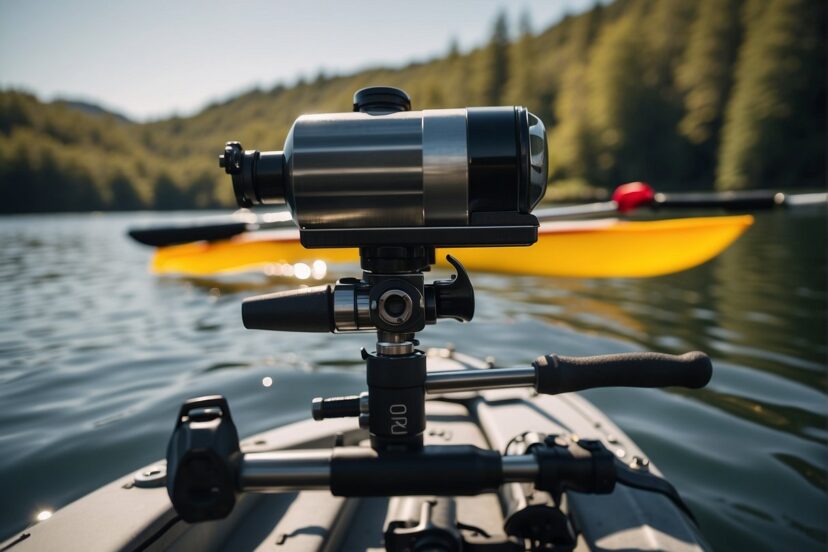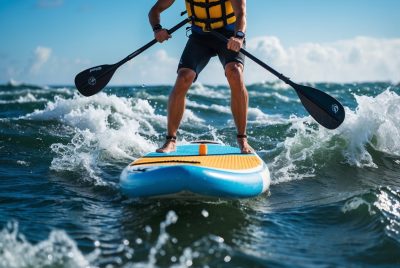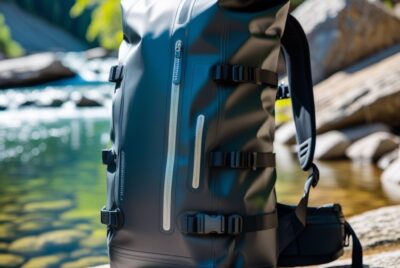Mount a Trolling Motor on a Kayak: Simple Installation Guide
*We may earn a commission for purchases made using our links. Please see our disclosure to learn more.
Mount a Trolling Motor on a Kayak: Simple Installation Guide
How to Mount a trolling motor to a kayak to greatly enhance the kayak’s capabilities? It allows me to travel longer distances with less effort and reach prime fishing spots that were once too tiring to paddle to. Adapting kayaks for motorized propulsion is a trend that’s gaining momentum among anglers and recreational paddlers alike. The integration of a trolling motor with a kayak is not just a matter of convenience; it’s also about maximizing my time on the water, covering more area, and enhancing the overall kayaking experience.
When considering how to mount a trolling motor on a kayak, I have several options available, each with its own set of advantages. I can choose to attach the trolling motor on the bow, transom, or use a specialized trolling motor bracket. The placement affects the kayak’s performance and handling characteristics, so making an informed decision is crucial.
It’s important to note that kayak trolling motors are specifically designed for this purpose. They typically run off of a 12-volt marine battery and can offer up to 55 pounds of thrust, which is sufficient for the propulsion of a kayak. This means that I can journey farther without worrying about exhaustion and focus more on the adventure or the catch of the day.
Understanding Kayak Trolling Motors

When equipping a kayak with a trolling motor, it’s important to choose the right type, understand the thrust requirements, and consider power needs to ensure optimal performance.
Types of Trolling Motors
There are primarily two types of trolling motors suitable for a kayak: transom mount and bow mount. Transom mount trolling motors attach to the rear (stern) of the kayak and are popular for their ease of installation and use. Bow mount trolling motors, on the other hand, are fixed to the front of the kayak and often include advanced features like GPS-enabled virtual anchoring.
| Motor Type | Location | Common Features |
|---|---|---|
| Transom Mount | Rear (Stern) | Simple setup, easy access |
| Bow Mount | Front (Bow) | GPS, precision control |
Thrust Requirements
The thrust rating of a trolling motor determines how much force it can apply to move the kayak through the water. For most kayaks, a motor with a thrust rating of around 55 pounds is adequate. It’s crucial to select a motor with sufficient thrust to counteract currents and winds but also to avoid overpowering which could destabilize the kayak.
- Ideal Thrust Rating: Approximately 55 pounds
Power Considerations
Electric trolling motors are commonly rated by their power consumption in volts, with most kayak trolling motors requiring a 12-volt battery. The motor’s speed is a key factor that affects power consumption and battery life. To balance speed and power efficiency, it’s recommended to operate the motor at 80% or less of its maximum speed. This approach can extend battery use and prevent premature battery depletion.
- Recommended Voltage: 12 volts
- Typical Speed Range: 6 – 10 miles per hour
- Efficiency Tip: Run motor at ≤80% max speed for longer battery life
By keeping these specifics in mind, I can set up a trolling motor on my kayak that will enhance my fishing or paddling experience without compromising stability, power, or battery life.
Selecting the Right Trolling Motor for Your Kayak

When outfitting my kayak with a trolling motor, I prioritize finding one that ensures compatibility, proper mounting, and seamless control. These factors lead to a satisfactory installation and an enjoyable experience on the water.
Compatibility With Your Kayak
Materials and Design: I check that the trolling motor mount is made of marine-grade aluminum, ensuring that it’s both durable and corrosion-resistant. It’s important that the motor’s weight and thrust levels are appropriate for the size and design of my kayak to prevent any undue stress on the craft.
Power Needs: I also consider the battery size and power requirements. Electric trolling motors are rated by thrust, with larger kayaks often requiring more pounds of thrust. Typically, for every 100 pounds of fully loaded kayak weight, I require about 2 pounds of thrust.
Mount Location: Bow vs Stern
Bow Mounts: I find that bow mounts are ideal for my kayak when I need precision control and better maneuverability. However, they usually require a flat mounting surface and can be more challenging to install.
Stern Mounts: Stern mounts are more common and generally easier to set up. Though they may offer slightly less precise steering than bow mounts, they are well-suited for many kayak models and often allow for easier access and control.
Control and Steering Options
Foot-Controlled Systems: While opting for a foot-controlled system, I consider the deck space of my kayak and whether it will allow me to comfortably use foot pedals without obstruction.
Hand-Controlled Systems: With hand control, I ensure that the motor aligns with my seating position for easy reach. Placement here is key for maintaining comfort and control during navigation.
Remote-Control Systems: I don’t overlook remote systems; they can be very convenient, allowing me to steer the kayak from any position. However, they generally come at a higher price point and may require additional setup.
Frequently Asked Questions

When it comes to mounting a trolling motor on a kayak, I know it’s vital to understand the process, rules, and gear needed. Here are some common questions to guide you through.
What are the steps to securely mount a trolling motor on a kayak?
To mount a trolling motor on a kayak, initially, identify a stable, obstruction-free spot, often the stern. Secure the motor mount according to the manufacturer’s guidelines, ensuring even tightening for stability. Connect the motor to the mount, and affix the battery in a waterproof container for power supply.
Do regulations require the registration of a kayak if equipped with a trolling motor?
Yes, many regions require the registration of kayaks with trolling motors since it’s considered a motorized vessel. I recommend checking local boating regulations as requirements vary by location.
Which trolling motor models are best suited for kayaks?
For kayaks, a 12-volt battery powered trolling motor with around 55 lbs of thrust and a shaft length between 24 to 36 inches is generally optimal. It offers a balance of power and control, suitable for the kayak’s size.
Are there any special considerations for using a trolling motor with spot lock on a kayak?
If using a trolling motor with spot lock on my kayak, I consider the additional power usage and space for the larger battery. Also, ensure the kayak’s weight capacity can accommodate the trolling motor with this feature.
How do you control a kayak trolling motor using a remote?
To control a kayak trolling motor with a remote, securely mount the motor and pair the remote as per the user guide. Then, operate the motor using the remote for steering and speed adjustments, enjoying the hands-free convenience.
What are the potential benefits and drawbacks of adding a trolling motor to a kayak?
Adding a trolling motor to a kayak provides the benefit of effortless propulsion, which helps in covering more water and fishing effectively. However, it adds weight, affects the kayak’s maneuverability, and requires battery maintenance.




